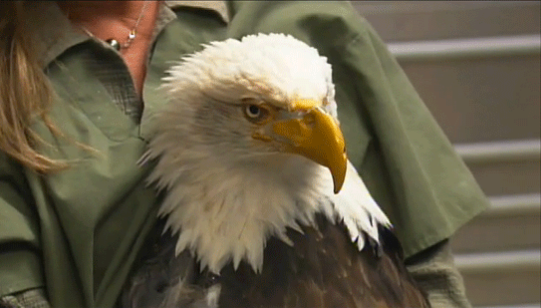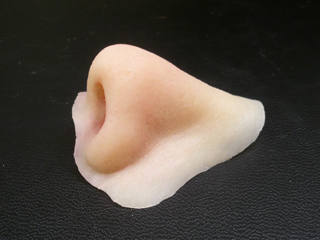Eric Moger, a 60 year old man in England lost the left side of his face after a surgery to remove a tumor. Due to the hole in his face he was unable to eat and drink properly. A doctor created a 3D printed prosthetic face, allowing Eric to get his life back.
[vimeo http://www.vimeo.com/15184546 w=500&h=375] A bald eagle, named Beauty, was found with the top half of her beak shot off. Rescued by Jane Fink Cantwell of Birds of Prey Northwest, Beauty is unable to feed or clean herself due to the loss of anatomy. While visiting the rescue center with his daughters, Nate Calvin of the Kinetic Engineering Group offered to help create a prosthetic beak. Calvin made a mold of the disfigured upper beak, laser-scanned it, modeled a prosthetic beak […]
Heavily inspired by the iRSM Digital Design in Facial Prosthetics workshop in Edmonton, Canada this summer, my classmate Lindsay and I conducted a study on rapid prototyping a digitally designed 3-piece auricular prosthesis mold. We utilized an iCAT to obtain DICOM files of our ear casts and patient treatment site. The DICOM files were then imported into Materialise Mimics to mirror the existing ear to adapt to the treatment surface. It was then booleoned from a larger cylinder and digitally […]
Anaplastology Materials & Techniques Digital Application of Data Acquisition via 3dMD (3D Stereophotogrammetry) for a non-invasive and instantaneous generation of a digital 3D mesh of surface with texture information. It allows for custom-selection and export of surface of interest (nose) in common 3D file formats (STL, OBJ). Rhinoceros prepares the STL file of noses for milling. SRP (Subtractive Rapid Prototyping) Player generates mill perimeters for the Roland MD X-40 Milling Machine. Replications were made of the master defect cast for working […]
Special Topics in Anaplastology: Fabrication of an Auricular Prosthesis Impression Making Marking Frankfort horizontal for orientation of prosthesis on defect cast. Impression Casting Wax Sculpting Mold Making 3 part mold with a wedge piece to prevent undercut behind helix. Intrinsic Coloration & Mold Packing Flocking – short colored fibers were added for a subtle color change and to mimic vasculature. Base color – semi-opaque underlying skin tone; commonly identified from underside of the forearm, along the hairline, anterior to the […]




